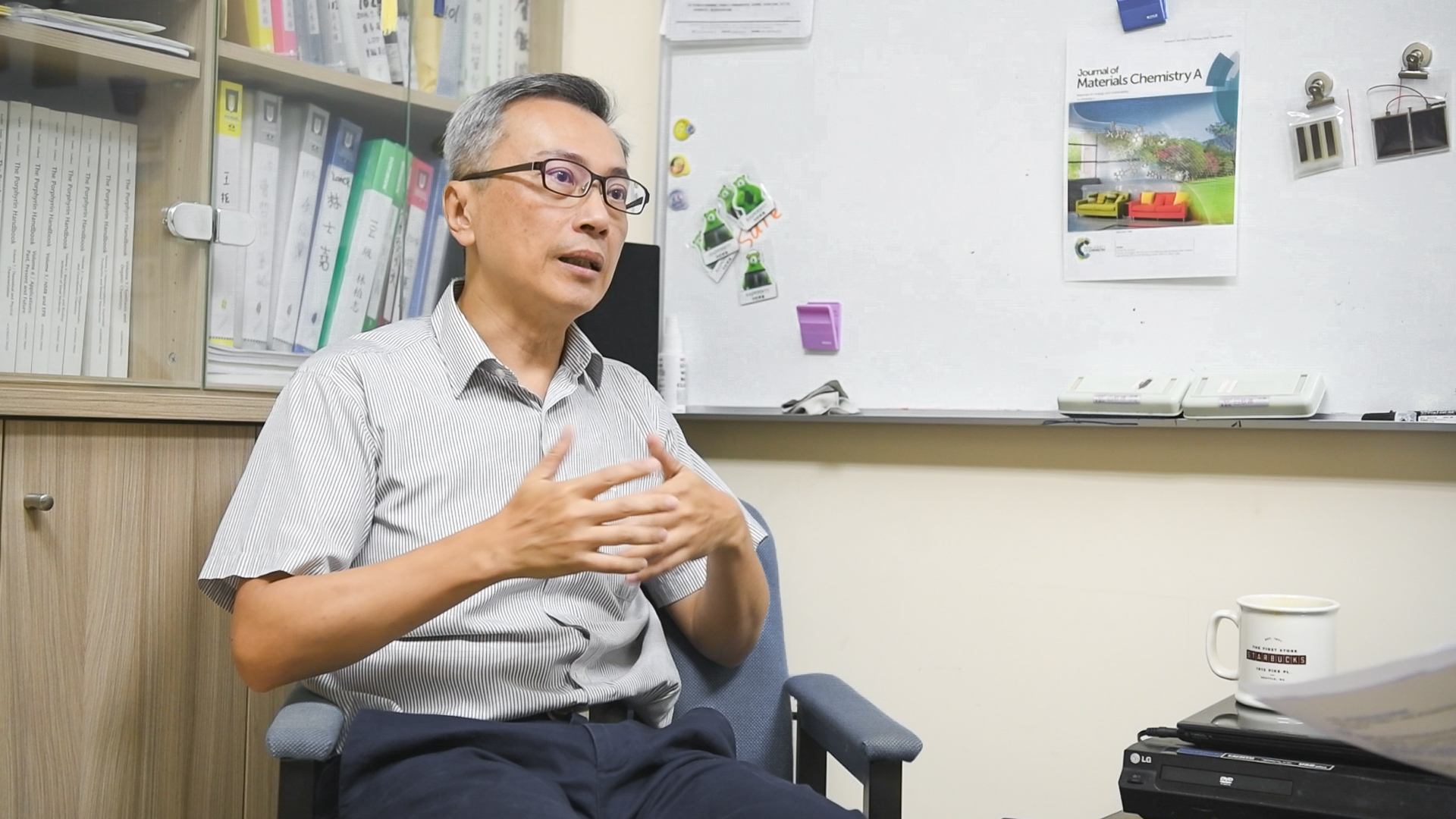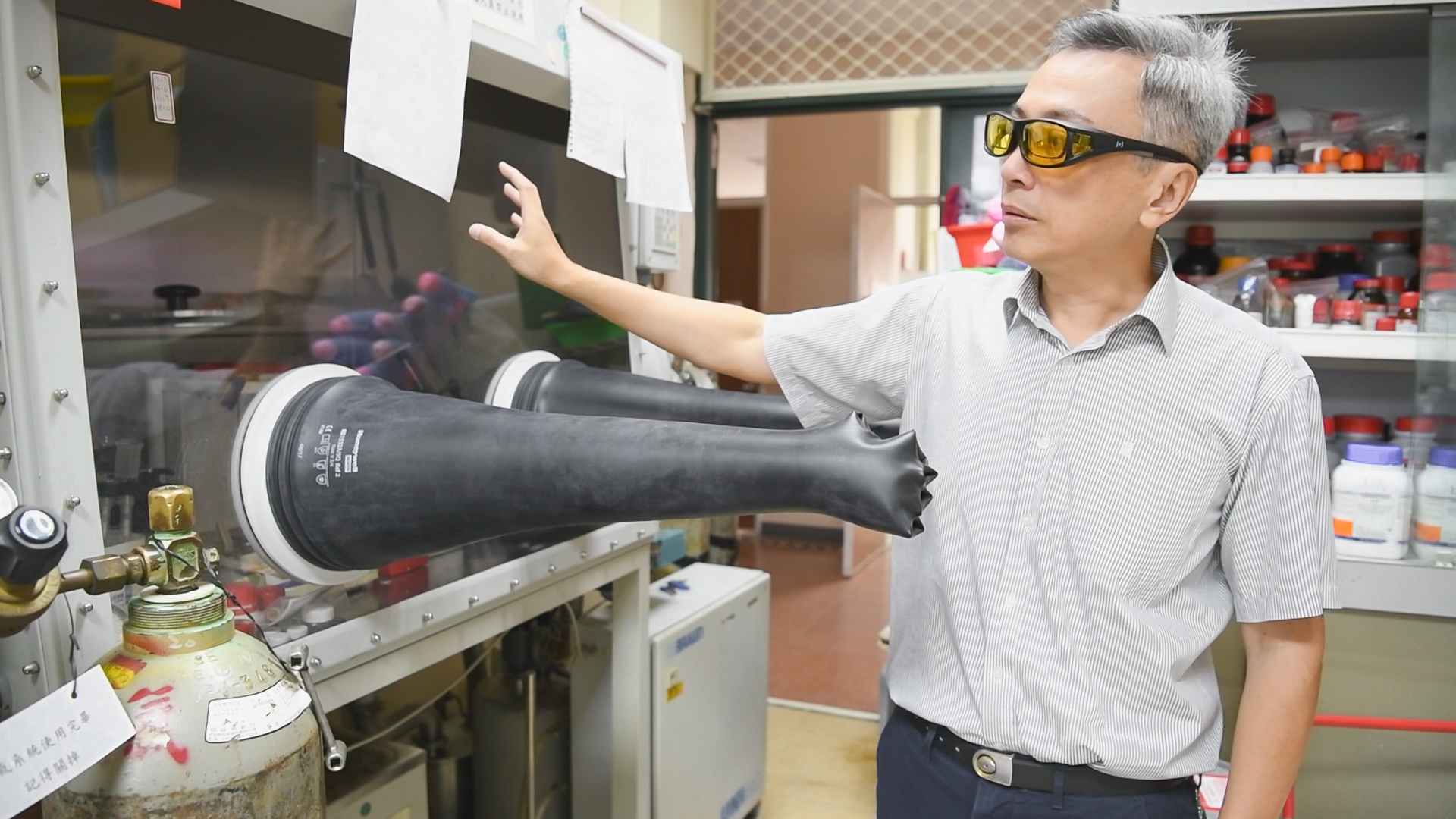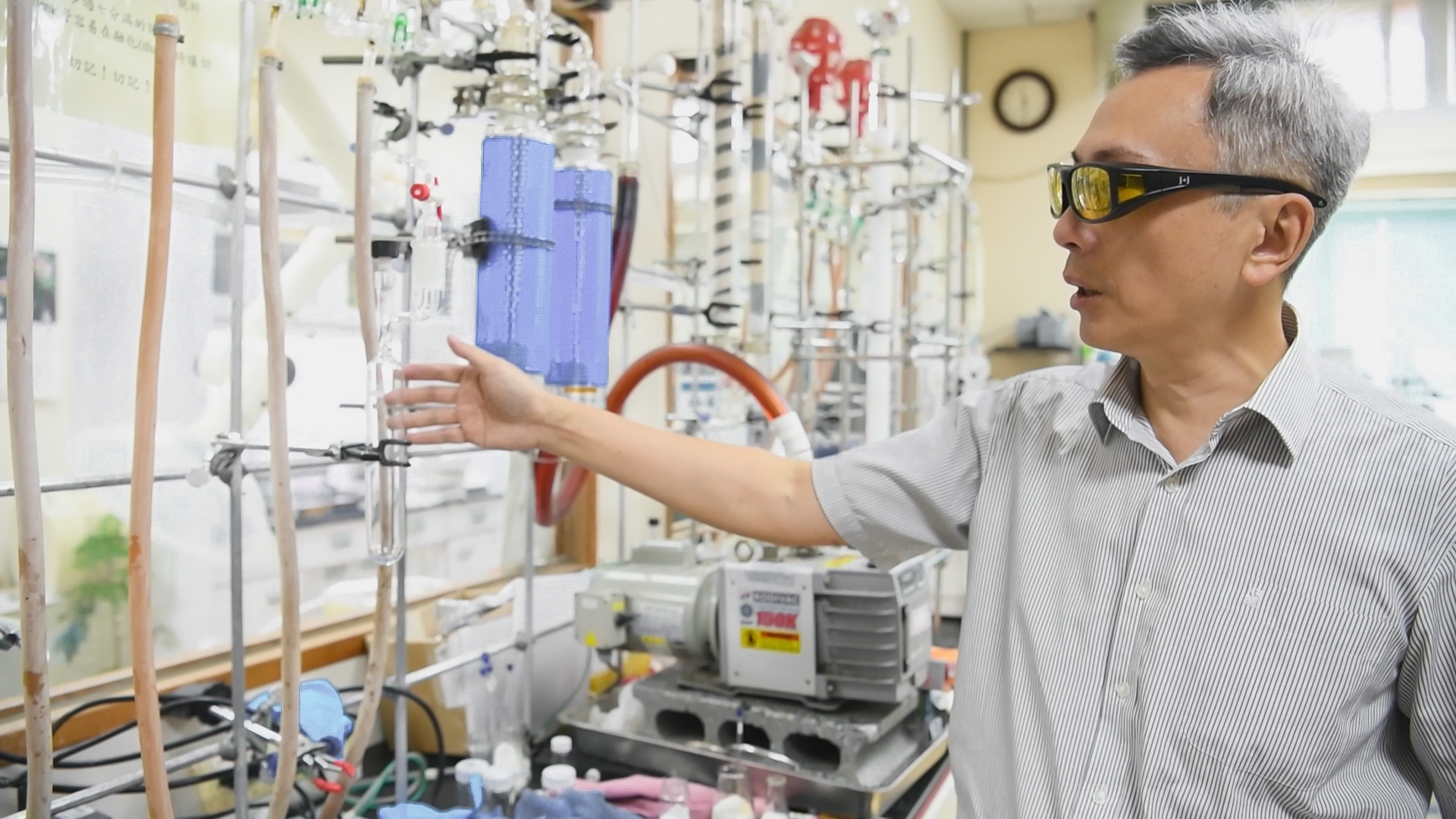The unlimited prospects of applied chemistry — Professor Lin Ching-yao

Under the innovative vision of Lin Ching-yao (林敬堯), a veteran chemistry professor with National Chi Nan University, dye-sensitized solar cells can now sport chic hues such as ultra-black and stylish orange, pink, and powder blue. His research projects have produced commercial results, garnering patents both in Taiwan and abroad. Last year, his paper was not only chosen for the “2018 Journal of Materials Chemistry A HOT Papers” collection, but also printed as the journal’s cover story in Issue 5, 2018.
Born and raised in New Taipei City, Lin made his studies journey from Fu-Jen Catholic University’s Department of Chemistry (undergraduate) and National Taiwan University’s Chemistry Department (graduate) to Princeton University (doctoral) and University of Pennsylvania (post-doctoral), gaining an immersive understanding of US culture and top-tier collegial operations in the process. He was invited to join NCNU's Department of Applied Chemistry upon the request of professor Yuhlong Oliver Su, who was also his mentor when Lin was a NTU graduate student, and has since devoted over two decades to passing on his Ivy League knowledge and pursuing new scientific research here at Puli Township. Su went on to become the president of NCNU.
His unconventional approach to collegial chemistry has taken Lin to newly popular and practical fields from solar panels and outdoor energy production to internal applications of lighting that can be further applied to IoT (Internet of Things) systems and environmental and interior design. This emphasis on practicality has led to impressive research results with bankable market value, leading to investment and support from related industries. Academic-commercial partnerships involving Lin’s project teams now include self-powering IoT solutions provider Taiwan DSC PV Ltd. and the Green Energy and Environment Research Laboratories of the Industrial Technology Research Institute (ITRI).
Commissioned by Taiwan’s Ministry of Science and Technology, Lin has also embarked on a five-year interdisciplinary project with the National Kaohsiung University of Science and Technology. One student team will devote research efforts to harnessing solar power for use in electronic devices, while a second team will work on product design, branding, and marketing.
The professor says he considers himself lucky to have found such a supportive environment in Taiwan, where there are sufficient funds in his areas of interest and compatible local collaborators. This shortens the time needed to find suitable partners, eliminates time zone differences and distractions, and frees up one’s mind to focus on research. Lin remains humble, citing experiences as researching together with a fellow doctoral student during their thesis projects. Research, after all, is teamwork.

Chemistry is another field of cooperation — one cannot simply toil alone like a laboratory rat. He explains that the graduate program is an institution first and foremost for instruction of personal character, then academic knowledge. Time is spent between themed research and discussion with mentors, and a valid scientific explanation cannot be attained without first encountering challenge or frustration. “A graduate student’s ability to undertake projects is dependent upon the institution to strengthen his or her capacity for emotional regulation and perseverance,” said Lin. “And this in turn will influence future career development.”
“When you have a really clear vision, and a great plan, and you finally maneuver your way through these obstacles, you don’t feel alone,” explained Lin. “The experience of being able to share that journey with teachers, lab mates, and associates is inexpressibly rewarding.” This sense of achievement is further compounded by the fruits of his research and teaching — former students now populate fields such as medicine and electronic panel manufacturing, making a name for themselves while promoting NCNU’s aptitude for education and research.
Chemistry is far from its stereotyped narrowness; in fact, it accounts for one of the two main forces that drive the growth of Taiwan’s top four manufacturing sectors, putting it on par with the other force — information and digital technology. Applied chemistry is estimated to contribute NT$5.24 trillion in industry output in 2019, which would translate to a 5.22% per annum increase, based on predictions of the Current Quarterly Model of the Industrial Economics and Knowledge Center (IEKCQM) of the Industrial Technology Research Institute.
Yet only about 1,000 students graduate from chemistry-related programs in Taiwan every year, barely meeting demand for specialists from pharmaceuticals and cosmetics to semiconductors, renewable energies, and solar power companies. Those who are interested in learning more about the professor and his field can contact him at:
Email: cyl@ncnu.edu.tw


